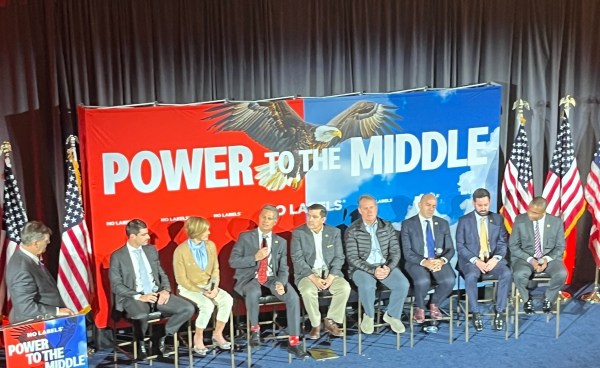Want to get the Monday Brief every week with even more content?
Click “subscribe” and get access to issue deep dives, podcasts, and community features like open threads and Q&A sessions.
Tech Terms
WebShell (web·shell) — A piece of code or a script that enables remote administration. While often used for legitimate administration purposes, it can also be used by malicious actors for remote control of internet-facing web servers.
Hyundai jumps into robotics — big time
What’s New: Hyundai Motor Group now owns a majority stake in the robotics juggernaught, Boston Dynamics.
Why This Matters: Boston Dynamics’ Atlas, Spot, and Stretch robots are blowing through the boundaries of what many robotistists believed was possible just a decade ago. Before reading on, watch the entire 2 minutes and 54 seconds of the video below and remember that these are not puppets, that these robots are not being remotely controlled (they are instead programmed), and that all of these movements are incredibly intricate and complex.
Key Points:
-
The deal gives Boston Dynamics a total valuation of $1.1B, with Hyundai owning 80% of the company and Japanese investment house SoftBank holding the rest.
Hyundai, Boston Dynamics, and SoftBank will “leverage each other’s respective strengths in manufacturing, logistics, construction and automation” to “create a robotics value chain, from robot component manufacturing to smart logistics solutions,” according to a joint press release. “Additionally, the Group will support Boston Dynamics’ continued expansion of its product line and global sales and service footprint.”
What I’m Thinking:
-
Domo arigato misuta Robotto! We live in a world where robots are real. Take that in. It’s amazing.
-
Don’t harsh my buzz. At least some robotics nerds are seeing this and saying, “Do you know how many times those robots fell down or made some other mistake while making this video? This is all marketing and we’re nowhere near this level of sophistication at scale.” In response I say this: I know. That’s true. It’s still awesome.
-
Of course, there’s always the risk that these things will kill us. No, I don’t mean that Atlas, Spot, and Stretch will become sentient and make “meat bags” like you and me their pets. But it is inevitable that robots like these will be employed in war and that, yes, they will be given a gun and they will kill people. The ethical concerns about this are myriad and real. They are also largely intuitive and well-known. So instead, I’d like to offer three reasons why I think armed robots could be a good thing. (1) They’ll save lives. Sending a real-live soldier through a door or across a battlefield necessarily puts them in mortal danger. A robot could do this for them. (2) They may actually reduce civilian and unintended casualties. It’s not hard to imagine, for example, an armed robot one day being able to come into a room, rapidly identify hostiles and civilians using facial recognition, and then eliminating a target with extreme precision — all without the complicating chemistry of adrenaline and fear. Finally, (3) they’ll be the ultimate force-multiplier. Robots won’t replace warfighters, they’ll supplement them and make them more lethal and effective. Many of us have seen how helpful and amazing dogs have been in warfare. Now imagine this “dog” always listens, never gets tired, is bullet resistant, can carry 100lb of kit, and has a freakin’ claw that can peel back steal!
-
More likely, in the near-term, these things will be worker bots. All the uses I describe above are real use cases, but we’re a while away from this becoming reality. Instead, robots are much more likely to be used for logistics and other menial — but important — tasks like loading cargo and conducting high-risk inspections of equipment. This too will save lives and make our fighting forces more agile, mobile, and hostile. And I’m here for it.
CSET Maps American AI research plans
What’s New: The rockstars at the Center for Security and Emerging Technology are mapping the research agendas of private sector AI labs in the United States.
Why This Matters: As the report says, “This data brief conducts an analysis of the research papers published by Amazon, Apple, Facebook, Google, IBM, and Microsoft over the past decade to better understand what work their labs are prioritizing, and the degree to which these companies have similar or different research agendas overall.”
Key Points:
-
The new report, Mapping Research Agendas in U.S. Corporate AI Laboratories, was published in April and was written by Researchers Rebecca Gelles, Tim Hwang, and Simon Rodriguez.
-
Major “AI companies” are often focused on very different subfields within AI. While companies like Amazon, Apple, Facebook, Google, IBM, and Microsoft are often grouped together generically as leaders in AI, an analysis of their publications shows considerable differentiation in the areas of research they prioritize. While publications may not provide the full picture of these companies’ research agendas — as companies may not choose to publish on work that will form the basis of valuable intellectual property — it still provides a window into the differences in research agendas between these companies. Policymakers should be careful to consider these differences in framing national assessments of technological competitiveness and in strategizing government investments in research.
-
The private sector may be failing to make research investments consistent with ensuring long-term national competitiveness. None of the leading companies examined in this analysis appear to be prioritizing work on problem areas within machine learning that will offset the broader structural challenges the United States faces in deploying and benefitting from the technology when competing against authoritarian regimes. This includes work in areas such as few-shot learning, federated learning, simulation learning, interpretability, and ML fairness.
“CSET has published previous work about the structural issues that may limit the ability for democracies to quickly adopt and benefit from advances in ML.Commitments to privacy, for instance, may make it more challenging to acquire the data necessary to train high-performance ML systems, and to deploy these technologies in certain contexts. While one path is to compromise on these values to move faster, investments in certain technical areas with ML can allow democracies to benefit from the technology without these sacrifices. For instance, advances in ‘one-shot’ or ‘few-shot’ learning may enable the creation of ML systems that achieve high performance with significantly smaller training datasets.”
What I’m Thinking:
-
Our private sector is diverse and agile — and that’s a good thing. This and many other reports illustrate how the U.S. innovation base is the most creative and free innovation base in the world. Our system of permission-less innovation produces the greatest level of human thriving history has ever known. We are rightly proud of this achievement.
-
But, the United States must also account for the relative strengths of other models — specifically China’s centrally-driven approach to innovation. While the American approach gives rise to more liberty and human thriving, we cannot deny that Beijing’s government-managed approach is also producing significant results within research areas that are a key priority for the Chinese Communist Party (CCP) and that could be decisive in shaping the international order. In technologies like facial recognition, advanced missiles, and quantum computing — all technologies emphasized as critical by the CCP — China is, or could soon be, a peer-competitor or superior to the United States. If we don’t want to cede our leadership, we need to evolve our approach.
-
We don’t have to become China to beat China; but, we almost certainly have to become something we currently are not. I’m categorically against a comprehensive, government-driven innovation system. But, I am insistent that the United States and private industry must come to a mutual understanding of technology’s growing role in geopolitics, how China is specifically exploiting this sector and the expertise of American companies in a way that imperils both public and private interests, and develop complementing strategies to ensure the nation’s economic and national security interests. This doesn’t require a government takeover, but it will require formalized structures that better enable interactions between government and industry where both stakeholders feel understood and protected.
-
Industry reluctance may require government coercion. Building the type of engagement described above has been … uneven. I’m specifically frustrated by just how reluctant key members of the tech industry have been — especially those companies studied in this report — to recognize the harm they are doing by being in China and by resisting collaborative work with the U.S. government. It is certainly true that progress has been made. But not enough. I’m increasingly open to, for example, (1) imposing strict penalties on any U.S. company whose compliance with Chinese law is deemed a national security threat; (2) requiring certifications that no U.S. data is used to violate human rights in China or other foreign nations; and (3) restricting contracts with the U.S. government for any American or foreign-owned company that complies with Chinese demands for private, proprietary, and other sensitive data. In essence: I think it’s time for companies to choose a flag.
State Debates How to Handle Tech
What’s New: The State Department is reviewing the mission and responsibilities of its planned bureau for cybersecurity and emerging technology, according to a a report from the Arms Control Association.
Why This Matters: The Bureau of Cyberspace Security and Emerging Technologies was originally approved by the Trump administration in January, but is now being reexamined by the Biden team.
Key Points:
-
The new organization has been in development since at least 2019, but the notification to Congress of its creation — which must be approved by Congress — was put on hold by House Foreign Affairs Committee Chairman Eliot Engle (D-NY), who argued the bureau would be too focused on cybersecurity.
This structure would go against “repeated warnings from Congress and outside experts that our approach to cyber issues needs to elevate engagement on economic interests and internet freedoms together with security,” said Engle.
-
Even so, then Secretary of State Mike Pompeo approved the creation of the bureau on January 7, 2021, but it has not yet been formed.
-
Now, Secretary of State Blinken has ordered a review of the decision, with a Foggy Bottom spokesperson saying Blinken “has affirmed his support to expand the department’s capacity to address cyberspace security and emerging technology policy issues,” and that “the department is committed to establishing a bureau following a review process that examines its mission, scope of responsibility, and placement.”
-
According to the GAO, State’s plan calls for the appointment of a coordinator and ambassador at large, who would report to the undersecretary of state for arms control and international security affairs. The bureau would have a projected budget of $20.8 million and a staff of 80 full-time employees, who would come from the Office of the Coordinator for Cyber Issues and the Office of Emerging Security Challenges within the Bureau of Arms Control, Verification and Compliance.
What I’m Thinking:
-
The State Department needs a dedicated cybersecurity and technology effort because these issues are increasingly shaping international diplomacy. I, therefore, support an effort to build specific capacity along these lines.
-
From what I’ve read and from conversations that I’ve had, the Biden review appears to be a legit effort to “right-size” and rationalize this organization with the administration’s broader cyber and tech policy plans. I don’t think they’re slow-rolling this or trying to kill it. In fact, I won’t be surprised if they plus-up the budget and personnel numbers.
-
Finally, I’m not sure if placing this bureau within the undersecretary for arms control and international security is the right move. It’s not that there’s no logic to this structure, but it risks bureaucratically burying the issues. Specifically, because cyber and emerging tech are so different from the rest of the undersecretary’s portfolio, they may have significant internal challenges when it comes to political influence and budgetary investment.
-
All that said, we’ll see how this shakes out in the coming months and, like most government evolutions, this will likely be a less than optimal — but still important — change.
Let’s Get Visual

Nerd Humor

Quick Clicks
That’s it for this Monday Brief. Thanks for reading, and if you think someone else would like this newsletter, please share it with your friends and followers. Have a great week!







Please note that we at The Dispatch hold ourselves, our work, and our commenters to a higher standard than other places on the internet. We welcome comments that foster genuine debate or discussion—including comments critical of us or our work—but responses that include ad hominem attacks on fellow Dispatch members or are intended to stoke fear and anger may be moderated.
You are currently using a limited time guest pass and do not have access to commenting. Consider subscribing to join the conversation.
With your membership, you only have the ability to comment on The Morning Dispatch articles. Consider upgrading to join the conversation everywhere.